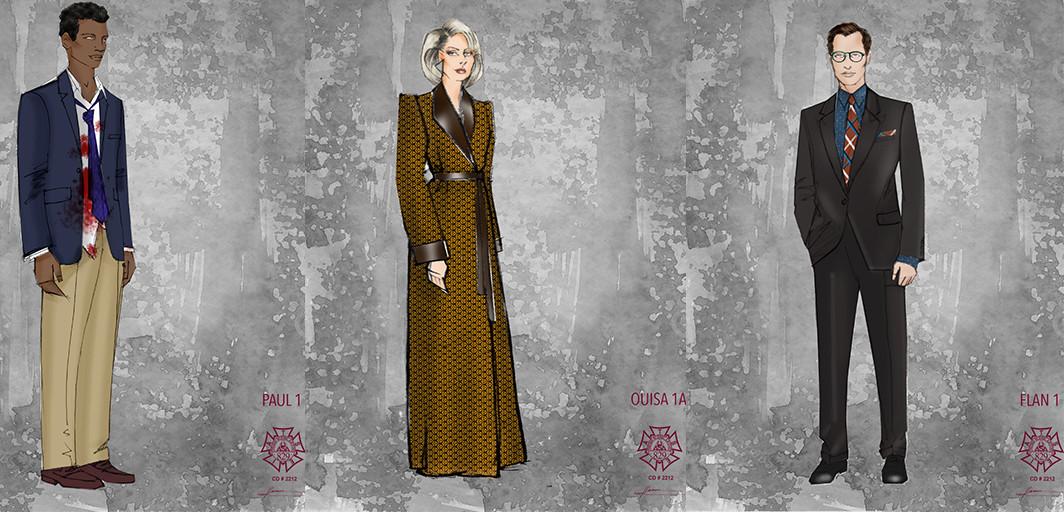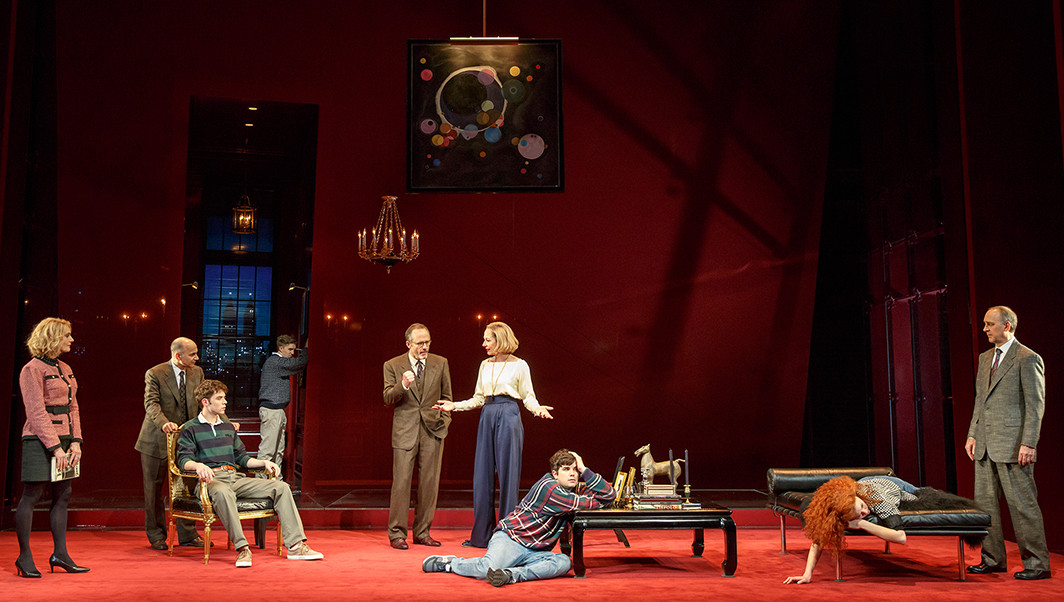Pop Culturalist Chats with Clint Ramos

Clint Ramos has been busy. Since his Tony Award win for Best Costume Design of a Play last year for Eclipsed, he’s designed for more than half a dozen off-Broadway and Broadway shows. Currently, his work can be seen in Sunday in the Park with George, Six Degrees of Separation, and The Whirligig.
Pop Culturalist was able to snag some time to chat with Clint about his design process, what projects he is drawn toward, and what time period he hopes to explore via costume design someday.
PC: Let’s start with talking about how you prepare for an upcoming project. How much time do you spend on a new show?
Clint: It really varies. Some shows are a year out and then we’re actually already working on it and developing it. The last project I did down at the The Public—the Saint Joan musical [Joan of Arc: Into the Fire]—that was already being developed. It really depends on the project. The production phase, that happens about two to three months before the show opens.
PC: What inspires you for your designs?
Clint: The design is different with every project. Sometimes I read the text, and it’s pretty obvious about what I need to dig up—like if it’s set in a certain period. I might research the personality of it, or the movement of the particular time or particular place. I think about who the characters are. I’m fascinated with how people wore clothes and why they put that particular shirt on on that particular day. What happens to them to get there? I look at a lot of photographic evidence if it’s the 20th century or earlier. I’ll also love looking at vintage clothes and seeing where they’re worn. It gives me a clue as to how people wore it.
PC: What is the most challenging thing for you when you’re going through that process?
Clint: The most challenging thing for me is the constant strain. I did a lot in …..you know you open one door, there are thousands more that open up. I think it’s sort of focusing the preperation into one…almost creating a pipeline of what exactly it should be. I think that the challenge I have, most of the time, is really sort of the philosophy of choice. How do I diagram these choices? I have to be as specific as possible. And that’s just the design portion. There are other sets of challenges happening when you try to present your vision to the director and ultimately to the actor. Will they agree, you know?
PC: Once you get to the stage where you’re presenting it, how much does that change your design?
Clint: Oh, a lot. We can completely make a u-turn and have to go back.It could change the direction because some actors could see the character differently than you. Sometimes—hopefully most of the time—by the time I’ve gotten into the deep research, I’ve spoken to the director about the vision. Most of the time what happens is, the actors don’t get to be a part of that process since this all happens before the rehearsals. But, sometimes, like with Six Degrees of Separation, [it’s different]. We knew that Allison Janney was going to be the star of it so I had the pleasure and privilege to actually talk with her months before the design process started.
PC: You’ve also worked on shows that are revivals of classic productions. How do you work on a show like that while also bringing something new and fresh with your take on it?
Clint: I love that question because I think a lot of people actually don’t consider that. I know some designers who don’t want to be informed of what other people did before. I actually do. I like to look at things. I like to study. Revivals can inform [you] about what was important in the play at that time. To me, when I design a revival the first thing I have to consider is where we are right now in the world. Where we are socially, where we are politically, and it informs me as to what happens in that play that would be most relevant to today’s society. I can highlight a particular thing, or [decide that] I probably should not put this costume on this character because in today’s style it might look ridiculous. You know what I mean? It’s constantly negotiating with the current zeitgeist.
PC: Do you gravitate toward particular projects?
Clint: I gravitate towards projects that have a strong narrative based on a political view; things that have a social justice bent to them. Or, if the director is doing a revival—like recently with Sweet Charity—that has a serious take on it. [The main character] is a sex worker, and we need to see what kind of life she has, and why she’s covering up all this pain with all this yuck. I’m attracted to projects about outsiders trying to fit into the world of the play. I’m an immigrant so I’m attracted to those stories.
PC: Do you have a project that has been a favorite to work on?
Clint: Well Eclipsed, which I did last year, is a favorite. It had a resonant, political and social story. Plus it was a really collaborative process, too. We were able to highlight an all-female, all-black team on Broadway. I also worked on Here Lies Love, based on [former First Lady of the Philippines Imelda Marcos] that David Byrne wrote which had a really successful run in New York and is now on the West Coast. That was also very special because the music was sensational, and the story was really great. We sort of broke theatrical boundaries by doing that. It was completely immersive. I think those two, I would say, stand out for me.
PC: Is there a particular time period or style that you haven’t explored yet that you would like to someday?
Clint: I’ve probably done most of the 20th century. I really haven’t done a lot in the 1400s, in the Dark Ages. I’d love to get into that period. Or there’s a weird period between…it’s basically the 1830s. I’m always intrigued with the proportions of those dresses and the costumes. That fascinates—how to make that [period clothing] believable and relatable. That’s always a challenge with period clothing, but I think with that particular period [there] would be an extra challenge.
PC: Do you have one part of your process that is your favorite to do?
Clint: I’d say the technical rehearsals where everyone comes together. Everyone is working toward one goal. It’s such a great exercise in community building, but even though it’s a lot of work, it’s great to create something together. I think that’s my favorite part. The actors, the designers, the director, and all the technicians backstage are committed to one thing. You know, you all work on it, and it’s a week or two weeks [of this technical rehearsal], and then you give it up to the audience. And all of a sudden it’s gone. It’s not in your hands anymore. It’s kind of magical and spiritual in a way. That’s really my favorite part.
POPCULTURALIST SPEED ROUND
Guilty pleasure tv show or movie
The Housewives
Favorite Book
Interpreter of Maladies
Fav play
Miss Julie
Fav Musical
Sunday in the Park with George
Hidden Talent
I can sing.




Discussion about this post